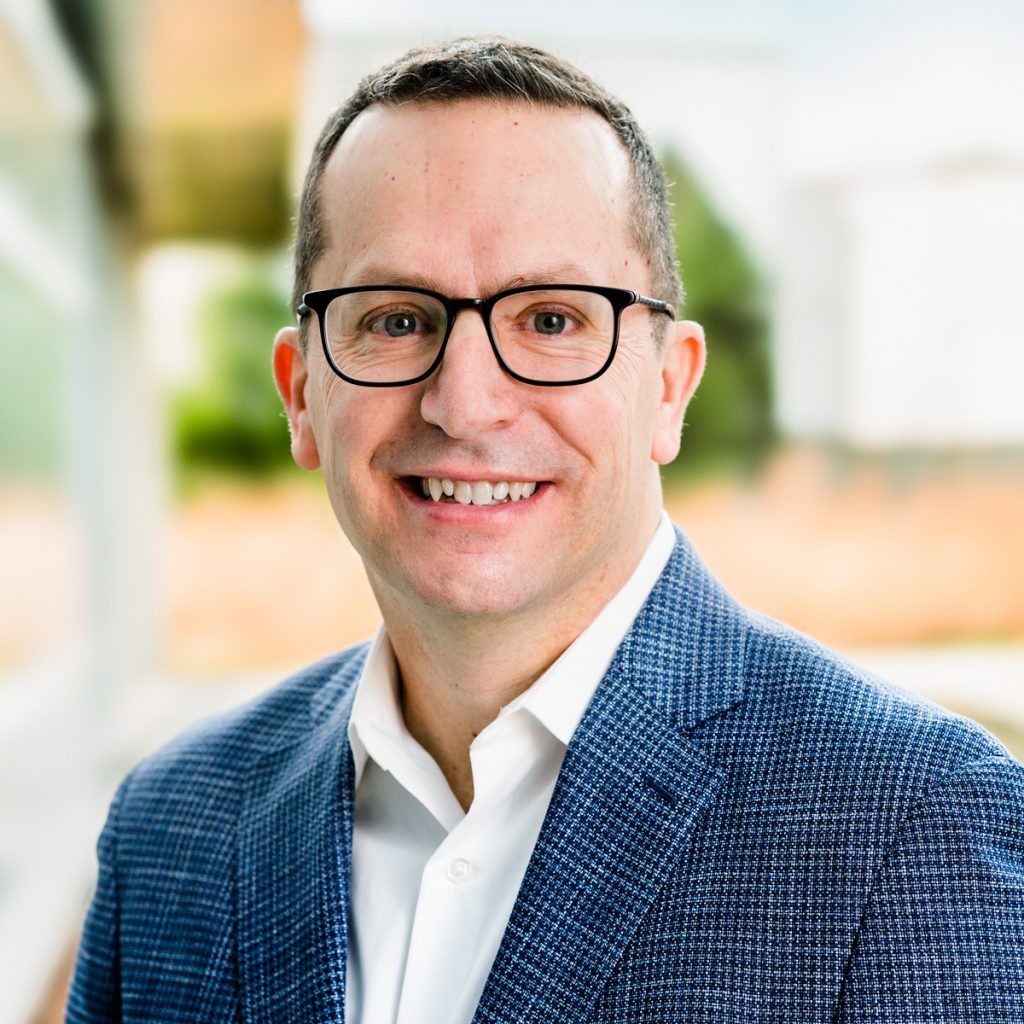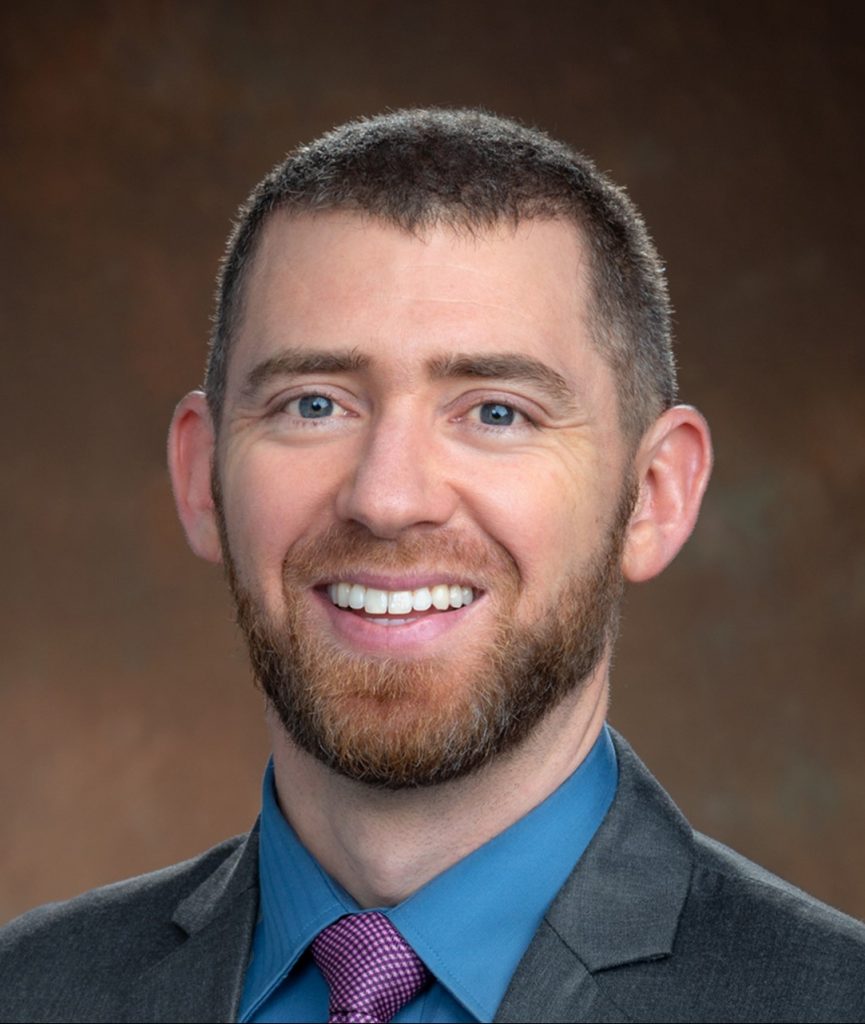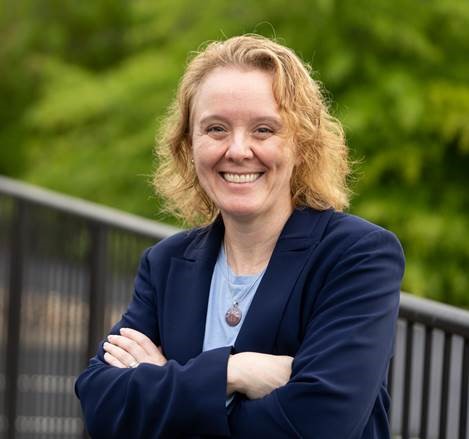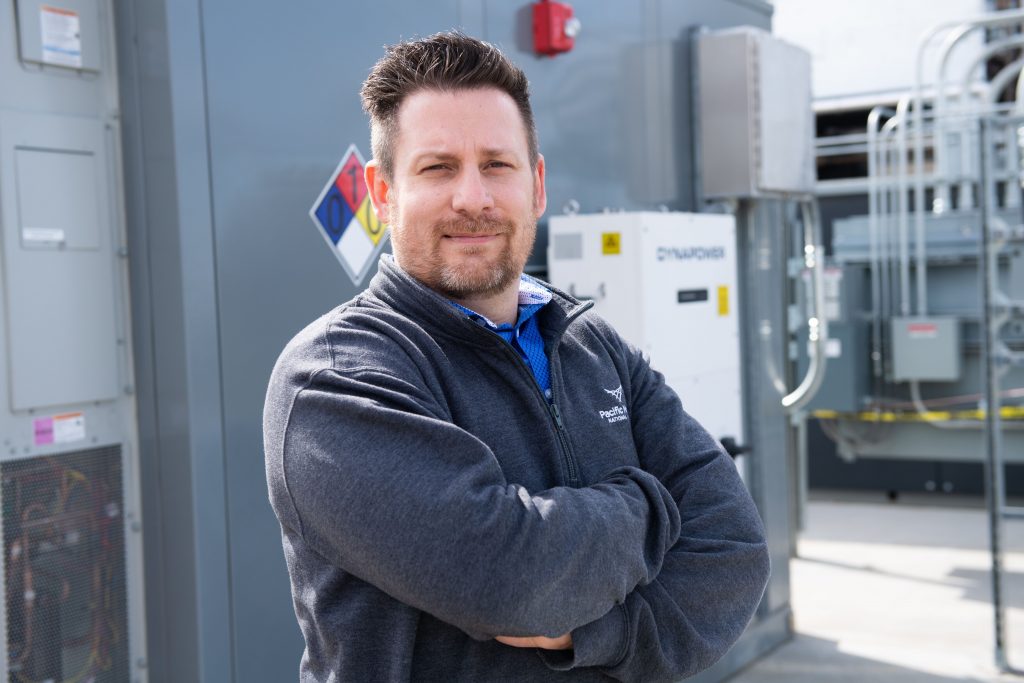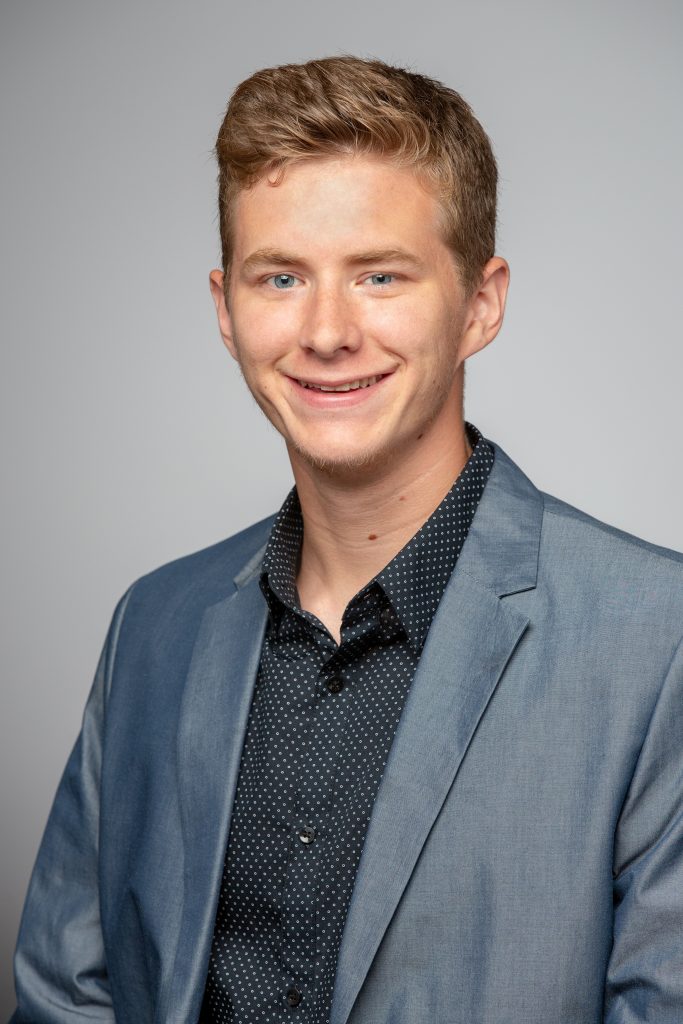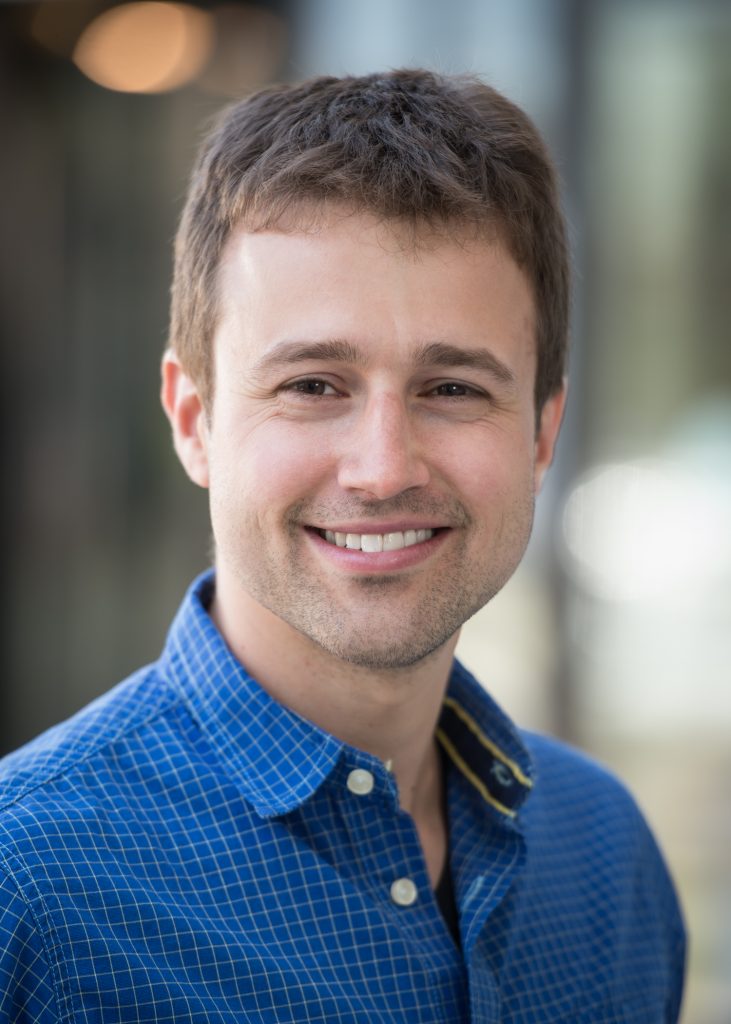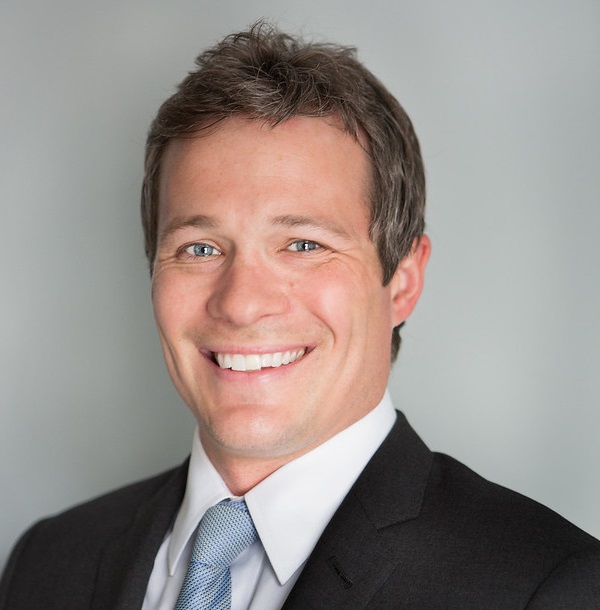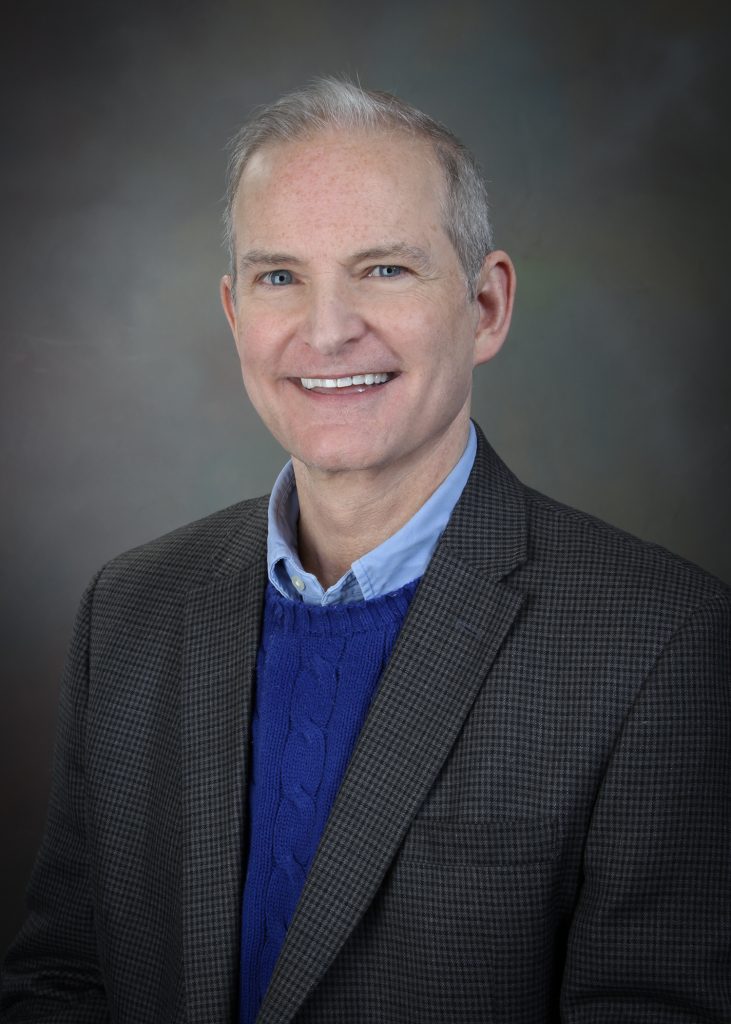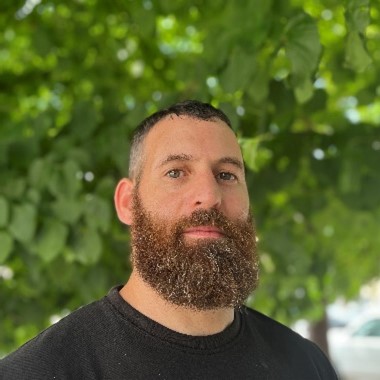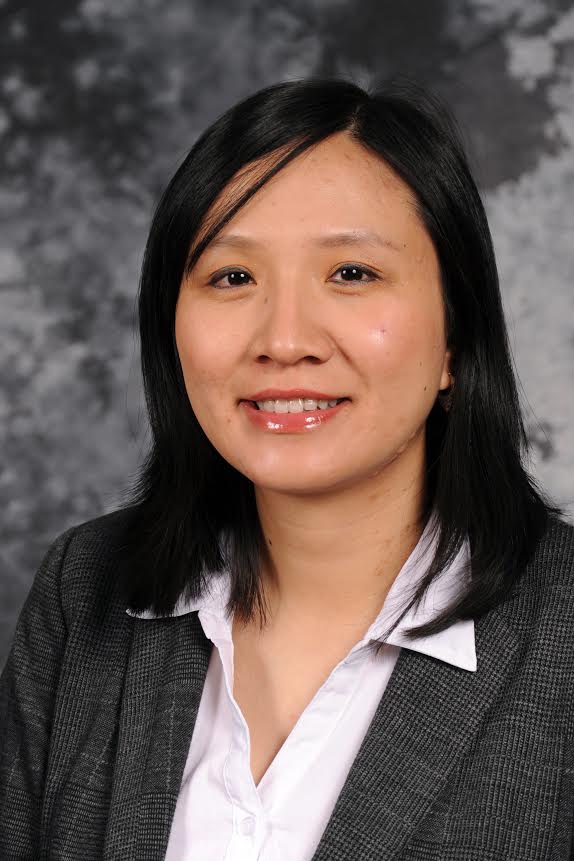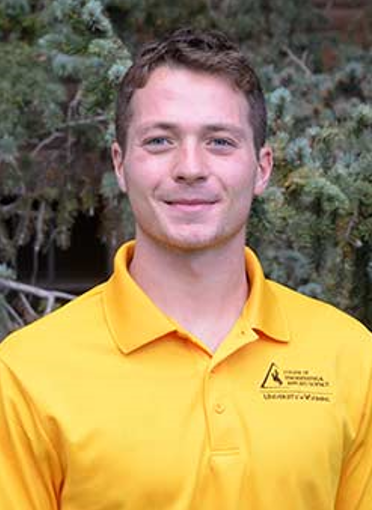
Tiger Teams
Purpose & Objectives
One of the most significant outcomes of the National Consortium will be a set of recommendations to frame multiple pathways to achieve LDES commercialization over the next decade. Commercialization refers to the steps that must be taken before technologies are successfully launched to affirm or redefine traditional approaches (i.e., pathways) addressing policies, financing, and investing, supply, production and distribution, marketing and sales, and customer support.
The purpose of the Customer Adoption Tiger Team is to assess the challenges and roadblocks that can negatively impact how customers in various markets can adopt, utilize, and benefit from LDES technologies.
The Customer Adoption Tiger Team will identify opportunities and barriers that drive or hinder the commercialization of LDES technologies as represented by the customer adoption of these technologies. Emphasis will be placed on opportunities and barriers that must be immediately addressed to enable a pathway for LDES commercialization within the next decade.
Monthly Meeting Schedule
The Customer Adoption Tiger Team will meet on the fourth Thursday of the month from 10:00am to 11:00am MT via Microsoft Teams.
For more information on how to join this Tiger Team, please contact Kailey Wulfert.
Scope
Within the context of this Tiger Team, “customer” can refer to any person or organization with a current or future interest in using a wide range of LDES technologies for a variety of applications. The current and future needs of customers in both wholesale and retail markets across the US will be considered within this Tiger Team. The Customer Adoption Tiger Team will be actively assessing challenges and roadblocks facing a broad range of LDES technologies and developing consensus-based recommendations to define the customer-focused pathways for LDES products, projects, economics, financing, policies, and equity so that overall customer adoption for LDES is enhanced. In addition, this Tiger Team will also work to assess the potential and likelihood of partnerships that can be developed between LDES technology suppliers and manufacturers and utilities seeking utility-scale solutions that can result in increased options for end-use customers. Information gathered directly from Teaming Partners and shared from other Tiger Teams within the National Consortium will be used to inform recommendations related to customer adoption of LDES technologies
Leadership
Zhiwen Ma – Laboratory Leader
National Renewable Energy Laboratory (NREL)
Dr. Zhiwen Ma is a senior engineer in the Thermal Sciences R&D Group at National Renewable Energy Laboratory (NREL). He received his Ph.D. in Mechanical Engineering from Georgia Institute of Technology (2000) and a M.S.M.E. degree from the University of Akron (1996). He was Test and Modeling Engineer at FuelCell Energy for six years since 2001 and worked at General Electric (GE) Aviation before joining NREL in 2009. His research focuses on particle thermal energy storage (TES), hydrogen production, and concentrating solar thermal power. Zhiwen is leading the research projects on long duration energy storage (LDES) using particle-based thermal energy storage, thermal and electrochemical modeling for electrolysis technology development, and solar fuel production. His research works on energy storage, solar receiver, advanced supercritical carbon dioxide power cycle, thermal and electrochemical modeling have been applied in Generation 3 concentrating solar power, solar fuel and hydrogen production. He has expertise in modeling and testing of particle TES, renewable solution and system development, component performance and cost analysis. He served as an associated editor for Frontier in Energy Research, has published over 80 papers, numerous technical reports, two book chapters, and was awarded fourteen patents.
TBD – Industry Advisor
Purpose & Objectives
One of the most significant outcomes of the National Consortium will be a set of recommendations to frame multiple pathways to achieve LDES commercialization over the next decade. Commercialization refers to the steps that must be taken before technologies are successfully launched to affirm or redefine traditional approaches (i.e., pathways) addressing policies, financing and investing, supply, production and distribution, marketing and sales, and customer support.
The purpose of the Demonstrations and Deployments Tiger Team is to identify relevant scenarios where utility scale energy storage technologies can be demonstrated at pilot scale and for small commercial applications. The Demonstrations and Deployments team will work with industry stakeholders to identify the practical challenges that exist with the addition of energy storage to the existing grid infrastructure.
Monthly Meeting Schedule
The Demonstrations & Deployments Tiger Team will meet on the first Wednesday of the month from 11:30am to 12:30pm MT via Microsoft Teams.
For more information on how to join this Tiger Team, please contact Kailey Wulfert.
Scope
The scope of this Tiger Team is defined as finding the right use-case for demonstration projects and supporting the techno-economic validation of LDES technologies. Stakeholders in the commercial deployment and demonstration projects would include utilities, ISOs/RTOs, existing technology providers, and upcoming technology providers that do not yet have large scale commercially deployed projects. Assessments of the interactions between diverse LDES technologies and real-world practical constraints will form a large part of the scope of this Tiger Team.
In addition, scope definition and interface with existing hardware, in conjunction with the relevant policies and permitting standards, is a significant part of the scope of deployment and demonstrations. The Demonstrations and Deployments Tiger Team will be assessing the grid interface which will be governed by local policies and regulations. With the grid interface defined, a standard integration plan can be proposed for multiple scenarios, which can be used to inform the development of other projects. A deployment project should have special emphasis on the following grid related aspects: 1) reliability; 2) operations and maintenance; 3) grid stability; 4) response time and regime; and 5) auxiliary grid services.
Leadership
Henk Laubscher – Laboratory Leader
Sandia National Laboratories (SNL)
Henk Laubscher is a creative mechanical engineer with a strong practical background and a passion for sustainability. His field of expertise is solar thermal energy and he holds a master’s degree in mechanical engineering (thermal energy storage) that he obtained at Stellenbosch University, South Africa in 2017. He has industry experience in the construction and commissioning of a 100 MW CSP parabolic trough plant, which provides him with the insights of large system integration. He is involved with many thermal energy storage related projects in his current role, supporting experimental testing for commercializing the technologies. Henk took part in the DOE funded Energy I-Corps program in 2021, focused on the business model development and commercialization of thermal energy storage to be integrated with retiring coal power plants. He enjoys working with a team of people and can seamlessly take the role of leader as well as team player. He joined Sandia National Laboratories in April of 2019 and is currently working at the National Solar Thermal Test Facility (NSTTF) in Albuquerque, NM.
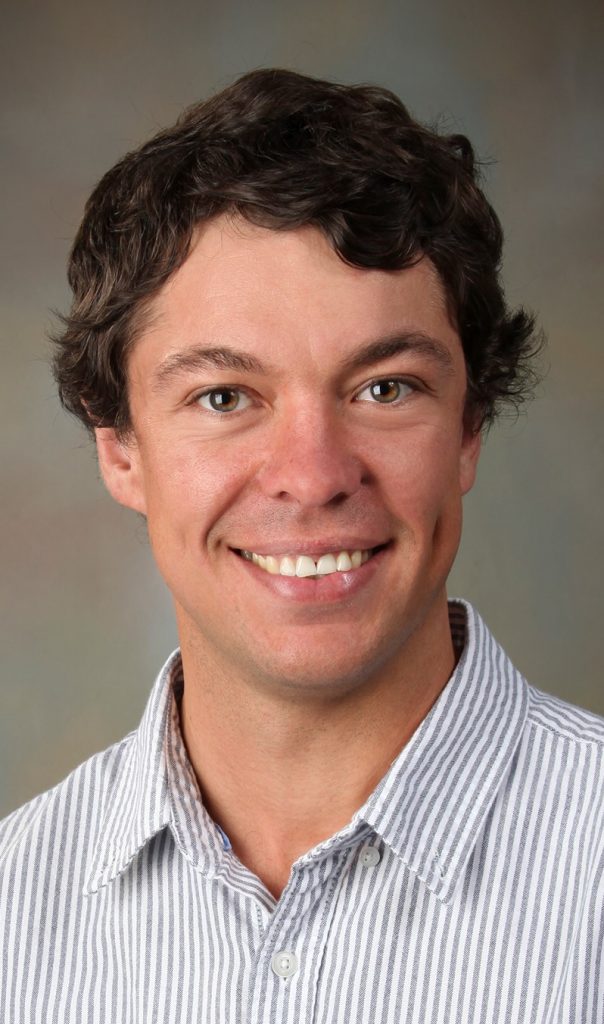
Dustin Highers – Industry Advisor
Chugach Electric Association, Inc.
Purpose & Objectives
One of the most significant outcomes of the National Consortium will be a set of recommendations to frame multiple pathways to achieve LDES commercialization over the next decade. Commercialization refers to the steps that must be taken before technologies are successfully launched to affirm or redefine traditional approaches (i.e., pathways) addressing policies, financing and investing, supply, production and distribution, marketing and sales, and customer support.
The purpose of the Economics and Valuation Tiger Team is to evaluate the methods, models, and tools for defining the costs and value of the services offered by LDES technologies, and the gaps that persist in defining, measuring, and monetizing the value of LDES from a system, societal, and operator perspective. The Tiger Team will work with industry to enhance the resource tool kit and to broadly disseminate those resources to industry participants.
Monthly Meeting Schedule
The Economics & Valuation Tiger Team will meet on the second Friday of each month from 12:30 pm to 1:30 pm MT via Microsoft Teams.
For more information on how to join this Tiger Team, please contact Kailey Wulfert.
Scope
The Economics and Valuation team will review LDES cost and performance studies; studies focused on developing research, development, and demonstration pathways for reducing the cost of LDES; taxonomies of benefits streams offered by LDES and what affects those values; methods, models, and tools for assigning value to the services offered by LDES; and documents evaluating pathways to commercial liftoff for LDES.
Leadership
Patrick Balducci – Laboratory Leader
Argonne National Laboratories (ANL)
Patrick Balducci is the Manager of the Power Systems and Markets Research Group in the Center for Energy, Environmental, and Economic Systems Analysis at Argonne National Laboratory. At Argonne, he also serves as the Lab Relationship Manager over the U.S. Department of Energy (DOE) Renewable Power Programs and the DOE Office of Electricity Energy Storage Program. Prior to joining Argonne, Patrick served as a Chief Economist at the Pacific Northwest National Laboratory (PNNL) where he served for nearly 20 years. At PNNL, he led the energy storage analytics team where his research focused on storage valuation, integration, performance characterization, and control systems. Mr. Balducci has led research efforts evaluating the benefits of energy storage at 19 sites across the U.S. with combined power and energy capacities of 3.4 GW and 51 GWh, respectively, and leads efforts to enhance economic assessment tools for DOE. He holds a BS in Economics from Lewis and Clark College, where he graduated with honors, and an MSc in Applied Environmental Economics from the University of London, Imperial College of London.
Gabe Murtaugh – Industry Advisor
LDES Council
Gabe Murtaugh is the director of markets and technology for the LDES Council and focuses on market changes that accelerate pathways for decarbonization accompanied by deployment of long duration energy storage technologies. Gabe is active in the storage community and holds a number of advisory positions for international decarbonization efforts and marquee storage conference events. Gabe has more than 10 years of experience working for grid operators, designing markets for storage participation and monitoring markets.
Purpose & Objectives
One of the most significant outcomes of the National Consortium will be a set of recommendations to frame multiple pathways to achieve LDES commercialization over the next decade. Commercialization refers to the steps that must be taken before technologies are successfully launched to affirm or redefine traditional approaches (i.e., pathways) addressing policies, financing and investing, supply, production and distribution, marketing and sales, and customer support. The purpose of the Equity Team is to assess the distributional impacts of LDES commercialization and its potential for impact on traditionally disadvantaged or underserved communities, and to identify and disseminate good practices that address barriers to equitable access to the benefits of LDES.
Monthly Meeting Schedule
TBD
For more information on how to join this Tiger Team, please contact Kailey Wulfert.
Scope
The Equity Tiger Team will review studies of the impacts of LDES on communities, including low income and disadvantaged communities. The Team will also work with other Tiger Teams to help determine the impacts of their findings and recommendations on energy equity.
The Equity Tiger Team will be actively assessing societal challenges and opportunities provided by the commercialization of a broad range of LDES technologies and developing consensus-based recommendations to ensure energy equity and environmental justice principles are upheld.
Leadership
Hope Corsair – Laboratory Leader
Oak Ridge National Laboratory (ORNL)
Dr. Hope J. Corsair is a Grid Energy Economist in the Electrification & Energy Infrastructure Division at the Oak Ridge National Laboratory. She specializes in cross-disciplinary and interdisciplinary work at the technical, social, economic, and environmental nexus of our rapidly changing energy landscape. Her work focuses on electric grid resilience, hydroelectric power-grid interaction, and community-scale energy solutions. Energy justice is a cornerstone of her work. Prior to joining ORNL, Dr. Corsair was a faculty member in Electrical Engineering & Renewable Energy at the Oregon Institute of Technology, and worked in resource planning and energy systems modeling in the electric power industry. She earned her PhD from Johns Hopkins University.
TBD – Industry Advisor
Purpose & Objectives
One of the most significant outcomes of the National Consortium will be a set of recommendations to frame multiple pathways to achieve LDES commercialization over the next decade. Commercialization refers to the steps that must be taken before technologies are successfully launched to affirm or redefine traditional approaches (i.e., pathways) addressing policies, financing and investing, supply, production and distribution, marketing and sales, and customer support.
The purpose of the Grid Infrastructure Tiger Team is to assess the challenges and roadblocks that can negatively impact deployment of LDES technologies due to lack of understanding of the system upgrades required to support interconnection and optimal utilization.
Monthly Meeting Schedule
The Grid Infrastructure Tiger Team will meet on the third Friday of each month from 1:00 pm to 2:00 pm MT via Microsoft Teams.
For more information on how to join this Tiger Team, please contact Kailey Wulfert.
Scope
Within the context of this Tiger Team, “grid” can refer to any situation in which an LDES technology is connected to distribution or transmission infrastructure. This includes instances in which LDES technologies are deployed behind the meter. The Grid Integration Tiger Team will be actively assessing challenges and roadblocks facing a broad range of LDES technologies and developing consensus-based recommendations to define the grid-focused pathways for LDES products, projects, economics, financing, policies, and equity so that overall customer adoption for LDES is enhanced.
Leadership
Shafiul Alam – Laboratory Leader
Idaho National Laboratories (INL)
Shafiul is a research scientist in the Power & Energy Systems Group of INL’s Energy & Environment Science & Technology Directorate. Shafiul has 10+ years of experience in steady state and dynamic analysis with high impact disseminations for power system integration, control, and operations. Shafiul served as the Technical Lead of 1) planning, and execution of energy storage hardware-in-the-loop simulation, 2) onsite deployment of micro phasor measurement unit (PMU) and data management for the preparation of energy storage supported small hydropower plant black start field demonstration. He previously worked on the power and communication hardware-in-the-loop testbed as part of the “Opportunistic Hybrid Communications Systems for Distributed PV Coordination” project. He also served as the Principal Investigator for the laboratory directed research and development (LDRD) project “High Performance Computing-based Dynamically Adaptive Protection Schemes for Electric Grid” that built the high performance real-time co-simulation platform and developed several transmission switching based blackout mitigation heuristics. Shafiul also served as a member of the IEEE PES 2023 award winning Distributed Energy Resources Management Systems (DERMS) Functional Specification working group that developed the 2021 Draft Gide IEEE 2030:11.
Shafiul is currently co-leading U.S. Department of Energy’s a) WPTO funded project “Hydro + Storage: Accelerating Industry Deployment of Hydropower Hybrids”, and b) WETO funded project “Wind Power as a Real Synchronous Generation (WindSG)”. Shafiul is also serving as a member of 1) IEEE P2030.14: Guide for Virtual Power Plant Functional Specification for Alternate and Multi-Source Generation, and 2) IEEE P2004: Hardware-in-the-Loop (HIL) Simulation Based Testing of Electric Power Apparatus and Controls working groups.
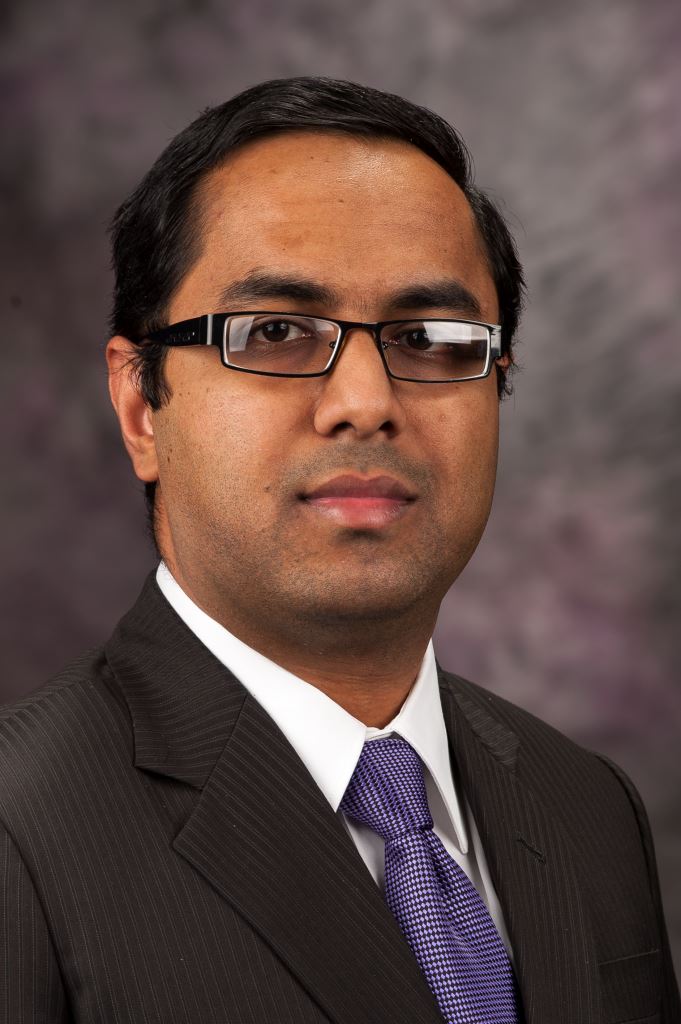
Dr. David Zamani – Industry Advisor
GridWrap
Davoud Zamani serves as the CEO and Co-Founder of GridWrap, Inc., a woman-led company at the forefront of tackling the global energy crisis. With a commitment to excellence, GridWrap, Inc. is passionate about providing top-tier Grid Enhancing solutions to bolster utility and grid infrastructure. Acknowledging the grid’s essential role as the foundation of modern society, GridWrap concentrates its efforts on fortifying this critical network to facilitate the transition towards clean energy. Before founding GridWrap, Davoud Zamani held the position of Global Business Development Leader at a Dow Chemical joint venture, focusing on markets in the United States and Europe. Davoud’s academic credentials include a PhD in Chemical Engineering and Material Science, complemented by a Master of Science degree specializing in Nano Polymer Engineering and Composite Materials.
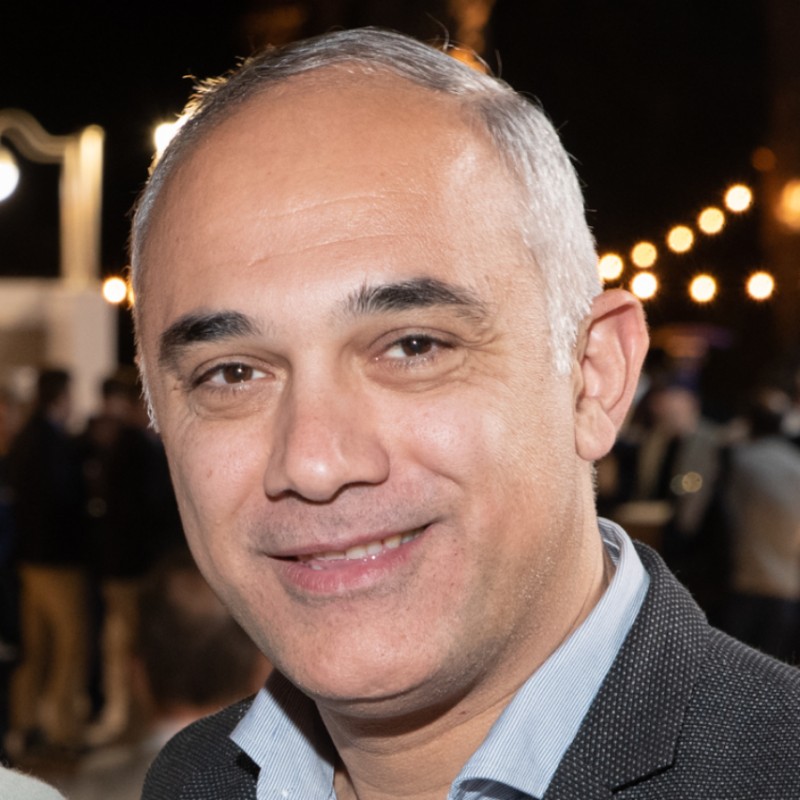
Purpose & Objectives
One of the most significant outcomes of the National Consortium will be a set of One of the most significant outcomes of the National Consortium will be a set of recommendations to frame multiple pathways to achieve LDES commercialization over the next decade. Commercialization refers to the steps that must be taken before technologies are successfully launched to affirm or redefine traditional approaches (i.e., pathways) addressing policies, financing and investing, supply, production and distribution, marketing and sales, and customer support.
The purpose of the Interconnection, Standards and Permitting team is to identify the implications of current interconnection, safety standards, and permitting processes for LDES technologies.
Monthly Meeting Schedule
The Interconnection, Standards & Permitting Tiger Team will meet on the third Friday of each month from 1:00 pm to 2:00 pm MT via Microsoft Teams.
For more information on how to join this Tiger Team, please contact Kailey Wulfert.
Scope
The Interconnection, Standards, and Permitting Tiger Team will address the practical implications of constructing and operating an LDES project. Before an energy storage system can enter service, it must go through an interconnection process, demonstrate compliance with relevant safety standards, and secure the necessary permits. Lithium-ion battery systems have faced a complicated path in navigating these processes, and given the breadth and diversity of LDES technologies, it is reasonable to expect that they will face challenges as well. The Interconnection, Standards, and Permitting team will review existing rules, standards, policies, and processes that govern energy storage interconnection, safety, and permitting to identify their implications for LDES technologies and gaps that may need to be addressed.
Leadership
Jeremy Twitchell – Laboratory Leader
Pacific Northwest National Laboratory (PNNL)
Jeremy Twitchell is a senior energy analyst at the Pacific Northwest National Laboratory, where he leads PNNL’s work on the Equitable Regulatory Environment thrust area of the Department of Energy – Office of Electricity’s Energy Storage Program. His research focuses on identifying the regulatory barriers that impede the deployment of energy storage technologies and best practices for reducing or eliminating those barriers, as well as providing technical assistance to states on energy storage-related topics. He also supports other efforts at the lab in areas related to grid planning, utility regulation, rate design, and energy system equity. Prior to joining PNNL, Jeremy spent five years at the Washington Utilities and Transportation Commission.
TBD – Industry Advisor
Purpose & Objectives
One of the most significant outcomes of the National Consortium will be a set of recommendations to frame multiple pathways to achieve LDES commercialization over the next decade. Commercialization refers to the steps that must be taken before technologies are successfully launched to affirm or redefine traditional approaches (i.e., pathways) addressing policies, financing and investing, supply, production and distribution, marketing and sales, and customer support.
The purpose of the Investor Confidence / Financing Tiger Team is to 1) assess the opportunities and challenges to increased public and private investment in LDES technologies, particularly for commercial-scale demonstration and deployment projects; and 2) to create and disseminate recommendations to increase confidence and reduce risk perceptions for LDES technologies among investment communities.
Monthly Meeting Schedule
The Investor Confidence & Planning Tiger Team will meet on the fourth Tuesday of each month from 12:00 pm to 1:00 pm MT via Microsoft Teams.
For more information on how to join this Tiger Team, please contact Kailey Wulfert.
Scope
Within the scope of this Tiger Team, the term “investors” refers to both persons and organizations who could extract value from LDES technology deployment. These entities could be both public and private investors with a range of priorities, markets, and revenue streams for their investments. The Investor Confidence Tiger Team will be actively assessing challenges and roadblocks facing a broad range of LDES technologies and developing consensus-based recommendations to define the investor-focused pathways for LDES products, projects, economics, financing, policies, and equity so that overall customer adoption for LDES is enhanced.
Leadership
Jeffrey Gifford – Laboratory Leader
National Renewable Energy Laboratory (NREL)
Jeffrey Gifford is a postdoctoral researcher at the National Renewable Energy Laboratory after completing his Ph.D. in the multi-disciplinary Advanced Energy Systems program at the Colorado School of Mines in May 2023; he has worked at NREL since 2018. His dissertation research answered key questions about long-duration, particle-based thermal energy storage systems using a multi-method approach, including computational fluid dynamics, dynamic integrated system modeling, and mixed-integer linear programming for design and dispatch optimization. His overall research interest is energy storage systems for economy-wide decarbonization but mainly focuses on component, system, and techno-economic modeling of particle-based thermal energy storage for industrial heat and grid electricity applications. He has also worked on modeling hydrogen electrolysis and leakage – another leading long-duration energy storage technology. Through his work, he has spent time researching questions focusing on long-duration energy storage value to and integration into the grid, including through the replacement of fossil fuel-based generation, and long-duration energy storage market and adoption opportunities, including industrial decarbonization and cooperate sustainability goals.
Vinayak Walimbe – Industry Advisor
Customized Energy Solutions (CES)
Purpose & Objectives
One of the most significant outcomes of the National Consortium will be a set of recommendations to frame multiple pathways to achieve LDES commercialization over the next decade. Commercialization refers to the steps that must be taken before technologies are successfully launched to affirm or redefine traditional approaches (i.e., pathways) addressing policies, financing and investing, supply, production and distribution, marketing and sales, and customer support.
The purpose of the Market Planning Team is to identify a set of opportunities and challenges for LDES technologies regarding their participation in both wholesale and retail electricity markets. In particular, the team will assess how potential changes to the following may impact the ability of these markets to capture the value that LDES resources can provide to the electricity system, and also ensure that LDES resources receive commensurate compensation for the services that they do provide. This will ultimately help to ensure that LDES resources are fully empowered to support affordable, reliable, resilient, and equitable operation and planning processes in future electricity systems.
- Wholesale market participation models to accommodate LDES.
- Wholesale market rules, e.g., market product definitions and market-clearing intervals.
- Market structure, e.g., roles and responsibilities and risk allocation.
- Aggregation models for distributed, behind-the-meter, resources.
- Retail rate structures and the availability of real-time or time-of-use pricing for resources that do not participate in wholesale markets.
Monthly Meeting Schedule
The Market Planning Tiger Team will meet on the fourth Friday of every month from 11:00 am to 12:00 pm MT via Microsoft Teams.
For more information on how to join this Tiger Team, please contact Kailey Wulfert.
Scope
The team will first assess current practices, primarily in the context of the current market participation practices of mature LDES technologies, e.g., pumped storage hydropower. This will include a review of current market rules and structures that are relevant to LDES participation, along with a parallel review of related studies and reports.
The team will then provide a more forward-looking assessment how different changes in market design and structure may affect the ability of organized markets the capture the value of LDES in both short-term operations and long-term planning processes. This will include a review of proposed market initiatives both by market operators and in the general literature. The team will also review studies related to emerging LDES technologies to assess how such resources with new characteristics may necessitate changes in market design.
This team will then further evaluate current practices for representing LDES in electricity market models, and assess the need for model needed to fully capture the value of LDES. Similar to above, the team will also establish how different LDES technologies with different characteristics may necessitate different modeling enhancements.
The team will also work closely with industry including technology developers, market participants and ISOs to capture key issues and disseminate findings and work products will be designed to objectively inform processes by providing practical resources to these, and other, stakeholders.
Leadership
Todd Levin – Laboratory Leader
Argonne National Laboratory (ANL)
Dr. Todd Levin is the Electricity Markets Team Lead in the Center for Energy, Environmental and Economic Systems Analysis at Argonne National Laboratory. His research interests focus on utilizing advanced optimization and simulation methodologies to model complex interactions in electricity markets and quantify the implications of domestic energy policies and regulations. He also maintains a strong interest in international energy development, examining optimal centralized and decentralized electrification strategies as well as a range of global energy security issues. Dr. Levin holds a B.A. in Physics from Northwestern University and a Ph.D. in Industrial Engineering from the Georgia Institute of Technology.
Timothy Fox – Industry Advisor
ClearView Energy Partners
Timothy Fox serves as Managing Director at ClearView Energy Partners, LLC, a DC-based research firm that identifies and quantifies policy risks and opportunities for institutional investors and corporate strategists. Mr. Fox leads the Firm’s power sector coverage and contributes to its U.S. policy research, including keen insights regarding state-level dynamics. Appearing frequently in print and broadcast media, he regularly presents before national associations and educational institutions. He previously worked as an energy analyst for a wealth management and private equity firm, served as a senior manager at a government affairs and lobbying firm, and held an analyst position at the U.S. Department of Homeland Security.
Purpose & Objectives
One of the most significant outcomes of the National Consortium will be a set of recommendations to frame multiple pathways to achieve LDES commercialization over the next decade. Commercialization refers to the steps that must be taken before technologies are successfully launched to affirm or redefine traditional approaches (i.e., pathways) addressing policies, financing and investing, supply, production and distribution, marketing and sales, and customer support. The purpose of the Policy & Regulations Team is to assemble key participants across the Teaming Partners who have an interest and perspective on US policies to develop actionable recommendations that can be provided to both state and federal entities to address key market drivers such as how LDES can be utilized to solve a grid problems, how LDES can be utilized to support a safe and reliable grid, and how LDES technologies can be fairly compensated in both wholesale and retail transactions to recognize the value they bring to the US power sector.
Monthly Meeting Schedule
The Policy & Regulations Tiger Team will meet on the first Friday of each month from 12:00 pm to 1:000 pm MT via Microsoft Teams.
For more information on how to join this Tiger Team, please contact Kailey Wulfert.
Scope
The Policy & Regulations Tiger Team will review studies of the impacts of LDES on communities, including low income and disadvantaged communities. The Policy & Regulations Tiger Team will also work with other Tiger Teams to help determine the impacts of their findings and recommendations on energy equity.
The Policy & Regulations Tiger Team will be actively assessing societal challenges and opportunities provided by the commercialization of a broad range of LDES technologies and developing consensus-based recommendations to ensure energy equity and environmental justice principles are upheld.
Leadership
Will McNamara – Laboratory Leader
Sandia National Laboratories (SNL)
Will McNamara is the Principal Investigator for the Long Duration Energy Storage (LDES) National Consortium, representing Sandia National Laboratories as the lead lab for this effort. He also leads the Policy & Regulations Tiger Team for the National Consortium.
Will serves as Grid Energy Storage Policy Analyst for Sandia National Laboratories with a focus on energy storage policy development at the federal and state levels. Will has spent his entire 30-year career in the energy and utilities industry with a concentration on regulatory and legislative policy. He has served as a lobbyist in California and has represented major utilities across the U.S. in numerous jurisdictions in proceedings pertaining to integrated resource planning, procurement, cost recovery, rate design, and the development of policymaking best practices. Will’s areas of subject matter expertise, in addition to LDES policy, include distributed energy resources, AMI/smart grid, renewables, and competitive retail markets.
Todd Olinsky-Paul – Industry Advisor
CESA
Purpose & Objectives
One of the most significant outcomes of the National Consortium will be a set of recommendations to frame multiple pathways to achieve LDES commercialization over the next decade. Commercialization refers to the steps that must be taken before technologies are successfully launched to affirm or redefine traditional approaches (i.e., pathways) addressing policies, financing and investing, supply, production and distribution, marketing and sales, and customer support.
The purpose of the Reliability and Resilience Team is to explore several key challenges in defining and evaluating the benefits of LDES investments on grid stability and to evaluate the methods and models used to quantify these impacts and assigning value to them. The Reliability and Resilience team will explore current approaches used to account for reliability/resilience objectives in the grid investment planning process.
This Tiger Team will review studies focused on defining and measuring reliability and resilience metrics. The team will explore research defining approaches for monetizing reliability/resilience contributions from grid investments and compensating resource owners. In addition, this Tiger Team will work with industry to enhance the resource tool kit and to broadly disseminate those resources to industry participants.
Monthly Meeting Schedule
The Reliability & Resilience Tiger Team will meet on the first Tuesday of each month from 1:00 pm to 2:00 pm MT via Microsoft Teams.
For more information on how to join this Tiger Team, please contact Kailey Wulfert.
Scope
The Reliability and Resilience Tiger Team will review studies that define approaches for both quantifying and monetizing the value of reliability and resilience contributions from grid assets, with particular emphasis placed on studies more focused on LDES impacts. This Tiger Team will also will also define a taxonomy of power system stability services that LDES can offer to grid operators; review resilience and reliability practices and reporting by utilities; and review alternative methods and tools for quantifying hazards that could result in reliability events and for assessing system recovery. In addition, this Tiger Team will also develop tools that can be used to evaluate the impact of grid investments on reliability and resilience will be evaluated and a comparison of their focus and strengths/weaknesses will be completed.
Leadership
Patrick Balducci – Laboratory Leader
Argonne National Laboratories (ANL)
Patrick Balducci is the Manager of the Power Systems and Markets Research Group in the Center for Energy, Environmental, and Economic Systems Analysis at Argonne National Laboratory. At Argonne, he also serves as the Lab Relationship Manager over the U.S. Department of Energy (DOE) Renewable Power Programs and the DOE Office of Electricity Energy Storage Program. Prior to joining Argonne, Patrick served as a Chief Economist at the Pacific Northwest National Laboratory (PNNL) where he served for nearly 20 years. At PNNL, he led the energy storage analytics team where his research focused on storage valuation, integration, performance characterization, and control systems. Mr. Balducci has led research efforts evaluating the benefits of energy storage at 19 sites across the U.S. with combined power and energy capacities of 3.4 GW and 51 GWh, respectively, and leads efforts to enhance economic assessment tools for DOE. He holds a BS in Economics from Lewis and Clark College, where he graduated with honors, and an MSc in Applied Environmental Economics from the University of London, Imperial College of London.
Kimberly Johnston – Industry Advisor
NextGen Energy Partners
Purpose & Objectives
One of the most significant outcomes of the National Consortium will be a set of recommendations to frame multiple pathways to achieve Long Duration Energy Storage (LDES) commercialization over the next decade. Commercialization refers to the steps that must be taken before technologies are successfully launched to affirm or redefine traditional approaches (i.e., pathways) addressing policies, financing and investing, supply, production and distribution, marketing and sales, and customer support.
The purpose of the Safety & Grid Security Tiger Team is to identify, develop, apply or adapt safety and security guidelines and standards for the deployment and utilization of LDES in the grid of the future.
Monthly Meeting Schedule
The Safety & Grid Security Tiger Team will meet on the second Tuesday of each month from 12:00 pm to 1:00 pm MT via Microsoft Teams.
For more information on how to join this Tiger Team, please contact Kailey Wulfert.
Scope
Within the context of this Tiger Team, “safety & grid security “refers to the consequence, mitigations and standards for secure and safe operation of LDES in the electric grid. The specific issues which will be addressed are the applicability of existing standards for storage, renewable and grid safety and security – along with identifying and filling gaps in these processes for new and emergent technologies. In addition, other state/regional limiting factors for relevant LDES technology expansion such as interconnection and the emerging NERC CIP guidelines for new technology will be evaluated. The sustainability selection of the future LDES safety & security standards will also depend on the storage site, capacity and fuel in the production processes to become cost competitive.
This Tiger Team will recommend pathways for safe and secure integration, and synergies with existing frameworks.
Leadership
Dan Ricci – Laboratory Leader
Idaho National Laboratory (INL)
Dan is a Navy veteran with 27 years of technical leadership and cybersecurity expertise, specializing in information technology (IT) and industrial control systems (ICS)/Supervisory Control and Data Acquisition (SCADA) systems and infrastructure for Chemical, Manufacturing, and Facility Related Control Systems (FRCS).
During his 21 years in the U.S. Navy, Dan managed and executed network data analysis, incident response, operational planning, personal security, vulnerability management, risk assessments, and project management for DoD Acquisition Category (ACAT) I & II programs. He played a pivotal role in devising innovative solutions for both Fortune 100 companies and military clients. This included developing vulnerability management programs for Manufacturing Execution Systems
(MES) and crafting security solutions for Building Automation Systems and Medium Power Distribution Systems.
Dan possesses extensive expertise in the analysis, exploitation, and defense of IEEE 802.11 (a, b, g, n, ab) wireless networks deployed in IT and ICS network environments. Additionally, he oversaw the operations of two 24/7 incident handling and intrusion detection sensor teams during cyber defense operations for the U.S. Navy, both afloat and ashore.
Furthermore, he is the founder of the ICS Advisory Project, an open-source initiative committed to enhancing CISA ICS Advisories data by integrating it with other data sources. This effort aids in prioritizing and safeguarding critical infrastructure against ICS vulnerabilities.
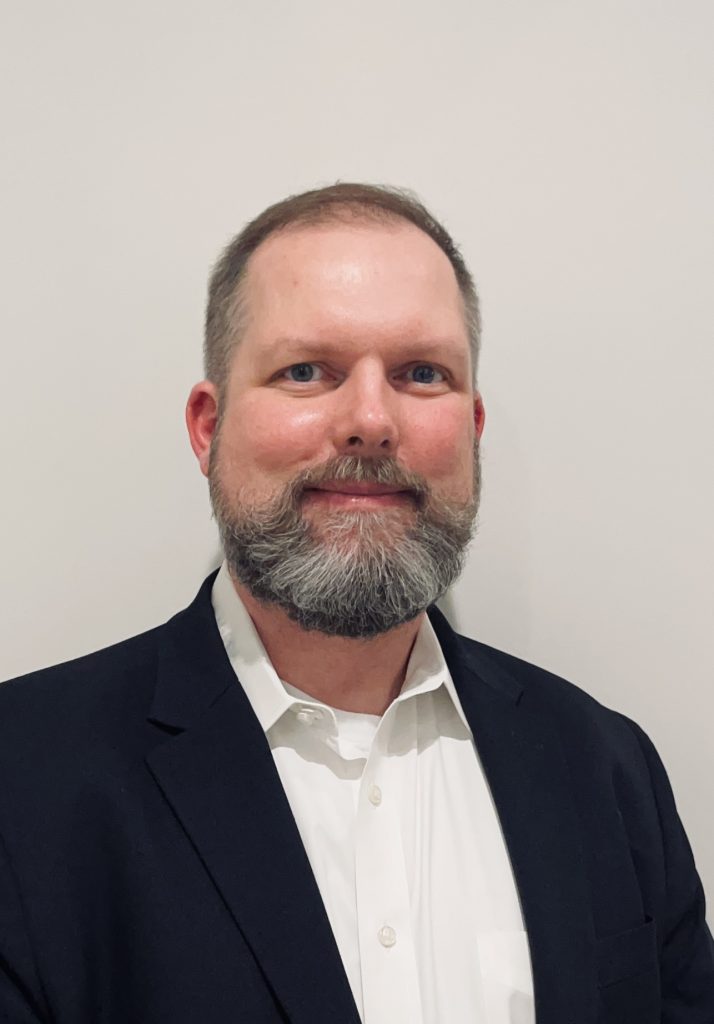
Matthew Millard – Industry Advisor
CapyBara Energy
Matthew Millard, Ph.D., serves as the CEO of CapyBara Energy, bringing over 15 years of experience in the energy sector, coupled with a robust portfolio of 27 patents and 5 scientific publications. His expertise lies in the development of coordination complexes for small molecule activation and battery material applications, drawing from a deep understanding of both the theoretical and practical aspects of these fields.
His professional journey includes significant contributions to the field of material science, particularly in synthesizing aerogels and creating high-performance polymer materials designed for 3D printing applications. Prior to his current role, Matthew was an integral part of the Coordination Complex Flow Battery team at Lockheed Martin Energy. There, he played a pivotal role in the development, synthesis, and scale-up of innovative coordination complexes for a grid-scale flow battery. His work in scaling the project from a one-liter flask in the laboratory to a 20,000-liter reactor was crucial in realizing the installation and operation of a 2.5MWh flow battery system. He has also made notable contributions to the development of solid-state lithium-ion batteries, as well as to various other components and systems pertinent to battery technology and grid-scale energy storage safety.
Purpose & Objectives
One of the most significant outcomes of the National Consortium will be a set of recommendations to frame multiple pathways to achieve Long Duration Energy Storage (LDES) commercialization over the next decade. Commercialization refers to the steps that must be taken before technologies are successfully launched to affirm or redefine traditional approaches (i.e., pathways) addressing policies, financing and investing, supply, production and distribution, marketing and sales, and customer support.
The purpose of the Supply Chain & Manufacturing Efficiencies Tiger Team is to assess the supply chain and manufacturing challenges and roadblocks that can negatively impact the deployment and utilization of the LDES technologies in future.
Monthly Meeting Schedule
The Supply Chain & Manufacturing Efficiencies Tiger Team will meet on the fourth Wednesday of each month from 2:00 pm to 3:00 pm MT via Microsoft Teams.
For more information on how to join this Tiger Team, please contact Kailey Wulfert.
Scope
Within the context of this Tiger Team, supply chain & manufacturing efficiencies refer to specific operations in the manufacturing and deployment process of various LDES technologies across the US. The specific operations include but are not limited to workforce, input material and equipment procurement, manufacturing, assembly and recycling/remanufacturing of products, components, and key materials. In addition, other state/regional limiting factors for relevant LDES technology expansion such as permitting, environmental, societal, cultural impacts will be assessed. The sustainability of the future LDES establishments will also depend on the optimized allocation of storage site, capacity and efficiency of the production processes to become cost competitive. The Supply Chain & Manufacturing Efficiencies Tiger Team will be actively assessing aforementioned factors regarding challenges and opportunities for a range of LDES technologies. We will also recommend supply chain and manufacturing pathways for LDES products to be reliable and economical.
Leadership
Ruby Nguyen – Laboratory Leader
Idaho National Laboratory (INL)
Dr. Ruby T. Nguyen is the lead of Dynamic and Spatial Systems Analysis Group, in the Decision Sciences Department, at Idaho National Laboratory. She has ten years of experience in conducting supply chain research on critical materials, transformers, grid conductors, battery reverse logistics, e-waste, plastic recycling, woody biomass, agriculture, and aquaculture. Her work has been funded by various Department of Energy offices, including Advanced Materials & Manufacturing Technologies Office, Office of Electricity, Office of Manufacturing Energy & Supply Chains, Vehicle Technologies Office and Bioenergy Technologies Office.
Dr. Nguyen joined INL in 2015 after working internationally in industry and non-profit sectors on climate change adaptation. She developed simulation models to evaluate critical material supply chain and economic impacts, dynamic interactions among bioenergy market actors, and integrated planning of the water-energy nexus. She holds a doctorate in environmental & natural resource sciences from Washington State University, where she also earned her master’s in environmental science.
Chuck Snyder – Industry Advisor
East Penn Manufacturing
Charles Snyder is the Director of Advanced Applications and Systems Engineering at East Penn Manufacturing. Mr. Snyder brings 25+ year of experience in senior level systems engineering and program management roles across the aerospace, financial services, telecommunications and energy industries. At Lockheed Martin, he held the position of spacecraft systems engineer and held design, systems, test and launch vehicle integration responsibilities for numerous spacecraft for the communications, civil and defense markets. In the financial services industry, he served in a senior level role for multiple enterprise wide IT projects at Citi and Morgan Stanley in New York City. He was Vice President of Systems Engineering at Stratocomm, a telecommunications start-up delivering infrastructure capability to remote and developing areas across the world. He commenced his battery industry career leading the engineering group for a small company which designed, manufactured and sold engineered solutions into the industrial battery industry.
He holds a bachelor’s degree in mechanical engineering from Drexel University as well as a master’s degree in systems engineering and an executive master’s degree in technology management. Both master’s degrees are from the University of Pennsylvania.
Purpose & Objectives
The Technology Development, Evaluation, and Testing Tiger Team, operating within the Long-Duration Energy Storage National Consortium, is dedicated to laying the groundwork for excellence in the development, evaluation, and testing of long-duration energy storage technologies. The mission of this Tiger Team is to establish comprehensive testing & performance optimization protocols, rigorous safety standards, robust collaboration programs, and accessible deployment readiness support that empowers industry to excel in enhancing the reliability, performance, and safety of energy storage systems.
Monthly Meeting Schedule
The Technology Development, Evaluation & Testing Tiger Team will meet on the last Monday of each month from 1:30 pm to 2:30 pm MT via Microsoft Teams.
For more information on how to join this Tiger Team, please contact Kailey Wulfert.
Scope
The scope of this Tiger Team involves establishing executable recommendations for foundational collaboration programs, testing & performance evaluation best practices, safety standards, and deployment readiness support to empower industry and national laboratory experts to improve the development, evaluation, and testing of energy storage technologies. We will develop comprehensive collaboration programs, design testing & performance optimization frameworks, define testing safety standards, create knowledge exchange platforms, and support deployment readiness. Through these published recommendations that will be offered to appropriate entities for implementation, this Tiger Team aims to enable the enhancement of the reliability, performance, and safety of diverse LDES technologies, driving progress toward a resilient, sustainable, and secure energy future.
Leadership
Luke McLaughlin – Laboratory Leader
Sandia National Laboratories (SNL)
Dr. Luke McLaughlin, a Mechanical Engineer specializing in R&D at Sandia National Laboratories, is an expert in the fields of thermal energy storage and concentrating solar power. Luke leads several DOE thermal energy storage projects, including a key project featuring a 6 MWh x 100 kWe Long Duration Energy Storage (LDES) demonstration using moving particle thermal energy storage technology. Additionally, Luke played a pivotal role as a technical lead for the DOE Storage Innovations Flight Paths Report and currently leads the Development, Evaluation, and Testing Tiger Team within the Long Duration Energy Storage National Consortium. He earned his M.S and Ph.D. in Mechanical Engineering from the University of Wyoming in 2019 and 2022, respectively.
Tracy Zhou – Industry Advisor
Shell Energy
Q. Tracy Zhou is a Senior Researcher for Energy Storage in Shell’s Power Technology organization, based in Houston, TX. Her current work at Shell focus on scouting, evaluating, testing, developing and commercializing energy storage technologies. She has almost 20 years of experience in academic and industrial R&D, including work in fundamental research, product development & technology commercialization, project development and valuation and venture capital investing. An electrochemist by training, she has diverse technical experiences in energy storage systems, including direct experience with lab and pilot testing, technology deployment and demonstration, project operation, technology maturation and commercialization.
Purpose & Objectives
One of the most significant outcomes of the National Consortium will be a set of recommendations to frame multiple pathways to achieve LDES commercialization over the next decade. Commercialization refers to the steps that must be taken before technologies are successfully launched to affirm or redefine traditional approaches (i.e., pathways) addressing policies, financing and investing, supply, production and distribution, marketing and sales, and customer support.
The purpose of the Use Case Development Tiger Team is to define utility needs for LDES and performance criteria (Technology-specific and technology-agnostic) and assess LDES landscape and likely timing of commercialization.
Monthly Meeting Schedule
The Use Case Development Tiger Team will meet on the fourth Tuesday of each month from 11:00 am to 12:00 pm MT via Microsoft Teams.
For more information on how to join this Tiger Team, please contact Kailey Wulfert.
Scope
Within the context of this Tiger Team, “Use Case Development” can refer to current or future interests in using a wide range of LDES technologies for a variety of applications. The current and future use cases of LDES across the US can be referred to LDES Commercialization Liftoff report previously published by the DOE and all aspects will be considered within this Tiger Team.
The Use Case Development Tiger Team will be actively assessing utility uses of a broad range of LDES technologies and developing consensus-based recommendations to define the use-case-focused pathways and timing of commercialization so that overall use case development for LDES is enhanced.
Leadership
Zhiwen Ma – Laboratory Leader
National Renewable Energy Laboratory (NREL)
Dr. Zhiwen Ma is a senior engineer in the Thermal Sciences R&D Group at National Renewable Energy Laboratory (NREL). He received his Ph.D. in Mechanical Engineering from Georgia Institute of Technology (2000) and a M.S.M.E. degree from the University of Akron (1996). He was Test and Modeling Engineer at FuelCell Energy for six years since 2001 and worked at General Electric (GE) Aviation before joining NREL in 2009. His research focuses on particle thermal energy storage (TES), hydrogen production, and concentrating solar thermal power. Zhiwen is leading the research projects on long duration energy storage (LDES) using particle-based thermal energy storage, thermal and electrochemical modeling for electrolysis technology development, and solar fuel production. His research works on energy storage, solar receiver, advanced supercritical carbon dioxide power cycle, thermal and electrochemical modeling have been applied in Generation 3 concentrating solar power, solar fuel and hydrogen production. He has expertise in modeling and testing of particle TES, renewable solution and system development, component performance and cost analysis. He served as an associated editor for Frontier in Energy Research, has published over 80 papers, numerous technical reports, two book chapters, and was awarded fourteen patents.
Mitchel Zafer – Industry Leader
Coffman Engineering
Purpose & Objectives
One of the most significant outcomes of the National Consortium will be a set of recommendations to frame multiple pathways to achieve LDES commercialization over the next decade. Commercialization refers to the steps that must be taken before technologies are successfully launched to affirm or redefine traditional approaches (i.e., pathways) addressing policies, financing and investing, supply, production and distribution, marketing and sales, and customer support.
The purpose of the Utility Resource Planning Tiger Team is to identify the barriers to LDES in utility planning processes, develop and compile tools and practices that address those barriers, and then broadly disseminate those resources to industry participants.
Monthly Meeting Schedule
The Utility Resource Planning Tiger Team will meet on the fourth Friday of each month from 12:00 pm to 1:00 pm MT via Microsoft Teams.
For more information on how to join this Tiger Team, please contact Kailey Wulfert.
Scope
Planning processes that will be studied by the Utility Resource Planning Team include integrated resource plans (IRPs), resource adequacy plans, and resilience plans. Resource acquisition processes that result from these plans, such as requests for proposals, will also be studied. Work products of the team will be designed to objectively inform planning processes by providing practical resources to utilities, regulators, and other participants in those processes.
Leadership
Jeremy Twitchell – Laboratory Leader
Pacific Northwest National Laboratory (PNNL)
Jeremy Twitchell is a senior energy analyst at the Pacific Northwest National Laboratory, where he leads PNNL’s work on the Equitable Regulatory Environment thrust area of the Department of Energy – Office of Electricity’s Energy Storage Program. His research focuses on identifying the regulatory barriers that impede the deployment of energy storage technologies and best practices for reducing or eliminating those barriers, as well as providing technical assistance to states on energy storage-related topics. He also supports other efforts at the lab in areas related to grid planning, utility regulation, rate design, and energy system equity. Prior to joining PNNL, Jeremy spent five years at the Washington Utilities and Transportation Commission.
TBD – Industry Advisor
Purpose & Objectives
One of the most significant outcomes of the National Consortium will be a set of recommendations to frame multiple pathways to achieve LDES commercialization over the next decade. Commercialization refers to the steps that must be taken before technologies are successfully launched to affirm or redefine traditional approaches (i.e., pathways) addressing policies, financing and investing, supply, production and distribution, marketing and sales, and customer support. The purpose of the Workforce Development Tiger Team is to assess the challenges and roadblocks to the availability of an appropriately skilled workforce across the technical fields necessary for LDES commercialization.
Monthly Meeting Schedule
TBD
For more information on how to join this Tiger Team, please contact Kailey Wulfert.
Scope
The Workforce Development Tiger Team will assess the availability of an LDES workforce and establish collaborations between industry and educational institutions to facilitate workforce development, focusing on known or anticipated gaps. The Workforce Development Tiger Team will be actively assessing challenges and roadblocks facing a broad range of LDES technologies and developing consensus-based recommendations to identify and educate a skilled LDES workforce.
Leadership
Hope Corsair – Laboratory Leader
Oak Ridge National Laboratory (ORNL)
Dr. Hope J. Corsair is a Grid Energy Economist in the Electrification & Energy Infrastructure Division at the Oak Ridge National Laboratory. She specializes in cross-disciplinary and interdisciplinary work at the technical, social, economic, and environmental nexus of our rapidly changing energy landscape. Her work focuses on electric grid resilience, hydroelectric power-grid interaction, and community-scale energy solutions. Energy justice is a cornerstone of her work. Prior to joining ORNL, Dr. Corsair was a faculty member in Electrical Engineering & Renewable Energy at the Oregon Institute of Technology, and worked in resource planning and energy systems modeling in the electric power industry. She earned her PhD from Johns Hopkins University.

